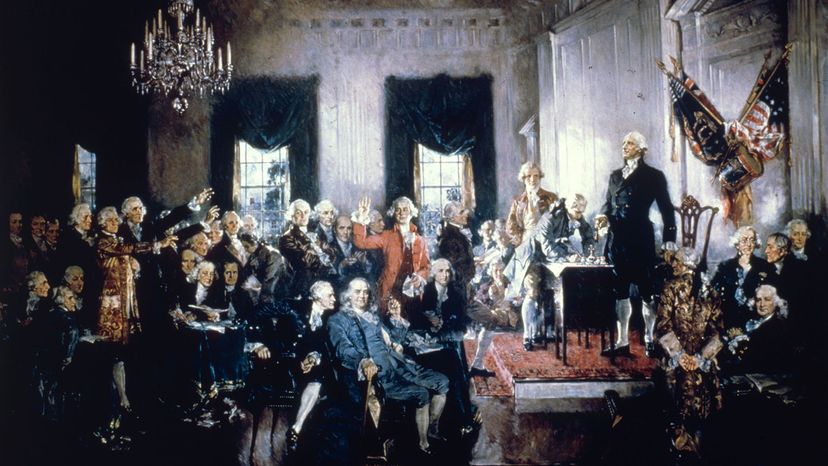The Constitutional Requirements of the President

When the framers of the Constitution considered an executive branch, they were still stinging from the despotic rule of King George III. Ultimately, the framers saw the need for a single person to head an executive branch with enough authority to be quickly responsive to crises.
There are few constitutional qualifications. The president must have been born in the United States (or on American soil abroad). He or she must be age 35 upon taking office and must have spent at least 14 of those years living within the United States (it doesn't specify if those years must have been consecutive) [source: U.S. Constitution Online]. As far as the Constitution is concerned, anyone who can meet those three requirements is eligible to be president of the United States. There are, however, some less formal prerequisites for taking the job.
Advertisement
The grueling campaign process is one obstacle that the American political system has created to vet candidates for the presidency. For more than a year, a candidate must compete against other members of his or her party in the primary race, be nominated at the convention and then campaign against nominees from other parties for the general election. Political connectedness and experience is typically essential, as is winning public opinion.
The Constitution lays out rules and duties for the president.
- The president serves terms of four years.
- During that time, he or she must oversee the faithful execution of U.S. laws.
- He or she must take this oath: "I do so solemnly swear (or affirm) that I will faithfully execute the Office of the President of the United States, and will to the best of my ability, preserve, protect and defend the Constitution of the United States."
- The president serves as commander in chief of the U.S. military and of state militias when they're activated under federal command.
- The president can grant pardons, except in cases where he or she has been impeached.
- He or she can make treaties with other nations, with consent of the Senate.
- The president can appoint Supreme Court justices, ambassadors and other public officers (such as Cabinet secretaries), with Senate confirmation.
- He or she can convene or adjourn both houses of Congress, if deemed necessary.
- The president must report to Congress in a State of the Union address.
- He or she must receive foreign heads of state and officials.
- The president is compensated (currently, $400,000 a year, plus $50,000 in expenses, $100,000 in travel expenses and $19,000 for entertainment) [source: Akhtar and Hoff].
- Should the president be accused of high crimes and misdemeanors, he or she can be removed from office through impeachment.
- The president must propose bills to Congress.
- He or she can block congressional bills from becoming law through the veto power.
This is the extent of the president's duties, and later amendments and laws further shaped the presidency. The 22nd Amendment (ratified after Franklin Roosevelt's record three full terms) limited the president to two terms, although these needn't be consecutive. President Grover Cleveland, for example, served two terms with a four year hiatus in between. The succession of power in the event of the president's removal or incapacitation was delineated in 1947: After the president is the vice president, followed by the speaker of the House, the Senate president pro tempore and then the Cabinet secretaries, in order of the post's creation.
A few presidents, like Chester Arthur and William Taft, took a narrow, exclusively constitutional interpretation of their powers. This has been the exception and not the rule, however. It's been the interpretation of the inherent powers — those not expressly granted in the Constitution — that's created the presidency we see today.